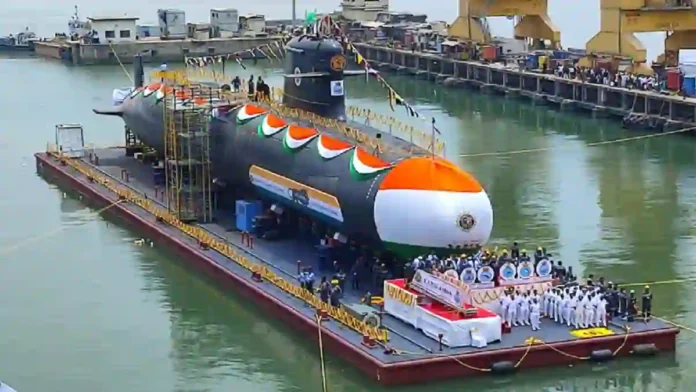India is currently advancing its submarine capabilities through two significant initiatives: Project-75I and Project-76. These projects aim to enhance the Indian Navy’s operational readiness and self-reliance in underwater warfare.
Project -75I
Project-75I is focused on the procurement of six next-generation conventional submarines. This initiative is part of a broader strategy to modernize the Indian Navy’s fleet and includes substantial international collaboration. The submarines under this project will be larger than the existing Scorpene-class submarines and will incorporate advanced technologies, including Air Independent Propulsion (AIP) systems. The project is expected to leverage the expertise gained from previous submarine programs and aims to enhance India’s indigenous defence manufacturing capabilities.
Project-76
In parallel, the Defence Research and Development Organisation (DRDO) has initiated Project-76, which aims to develop indigenous conventional diesel submarines. This project is a continuation of India’s long-term submarine building program and is designed to create six new submarines with a significant focus on indigenous content, estimated to be around 70-80%.
Key Features of Project-76
Indigenous Design and Development
Unlike its predecessors, Project-76 emphasizes the complete indigenous design and development of submarines, drawing on the technological advancements from Project-75 and Project-75I.
According to a report by The Hindu online portal, DRDO got a go ahead from MoD to carry out a preliminary study to determine the project contours. It is expected to take up to a year after which a formal case will be put up to the Cabinet Committee on Security (CCS) for project sanction. This will be a continuation of the Advanced Technology Vessel (ATV) project, to build a conventional submarine, under which the Arihant series of nuclear ballistic missile submarines (SSBN) are being built and another project for building nuclear-powered submarines (SSN) is currently underway.
Under P-76, there will be substantial indigenous content, including weapons, missiles, combat management system, sonars, communications, Electronic Warfare suite, mast and periscope, sources said.
The Navy has a 30-year submarine building program and after the P-75I, it intends to design and build conventional submarines indigenously, senior officials had stated on several occasions.
Air Independent Propulsion Technology
An Air Independent Propulsion (AIP) module designed and developed by DRDO is now awaiting fitment on the Scorpene class submarines. The first Scorpene-class submarine Kalvari is expected to go for refit in 2025 when the fitment process would begin and is expected to take 2-3 years, 2027 or 2028, sources said. This is being done in collaboration with Naval Group, the original manufacturer of Scorpene boats, sources in the know added.
An AIP module acts as a force multiplier as it enables conventional submarines to remain submerged for longer duration thereby increasing their endurance and reducing chances of detection.
The AIP is currently being continuously run on shore, and as there is no submarine, a simulated hull has been created to have near-sea conditions and also run the same cycles, the source stated. An AIP module is inside a submarine so there is no corrosion issue and the only aspect to be checked in a submarine is the reliability of the AIP module.
Read- Malaysia Seeks BrahMos Missile For Sukhoi-30MKM Fleet
The DRDO-developed AIP module is phosphoric acid based which is widely available, officials noted. An AIP module has a stack of fuel cells generating hydrogen. The power output of each fuel cell in the DRDO AIP is 13.5 kW. It is being so asked up to 15.5 kW and will eventually be scaled up to 20 kW which will meet future submarine requirements like the P-76, sources said.
The final configuration of the AIP is a stack of 24 fuel cells and the overall output will be higher than the requirement, to build in redundancy and optimise performance, another source explained.
Timeline: The design concept for Project-76 is targeted for completion by 2026, with the aim of integrating the best practices and technologies from previous projects.
Both Project-75I and Project-76 represent India’s commitment to bolstering its naval capabilities through indigenous development and advanced technology. These initiatives not only aim to enhance the operational effectiveness of the Indian Navy but also contribute to the broader goal of self-reliance in defence manufacturing.
Agencies




